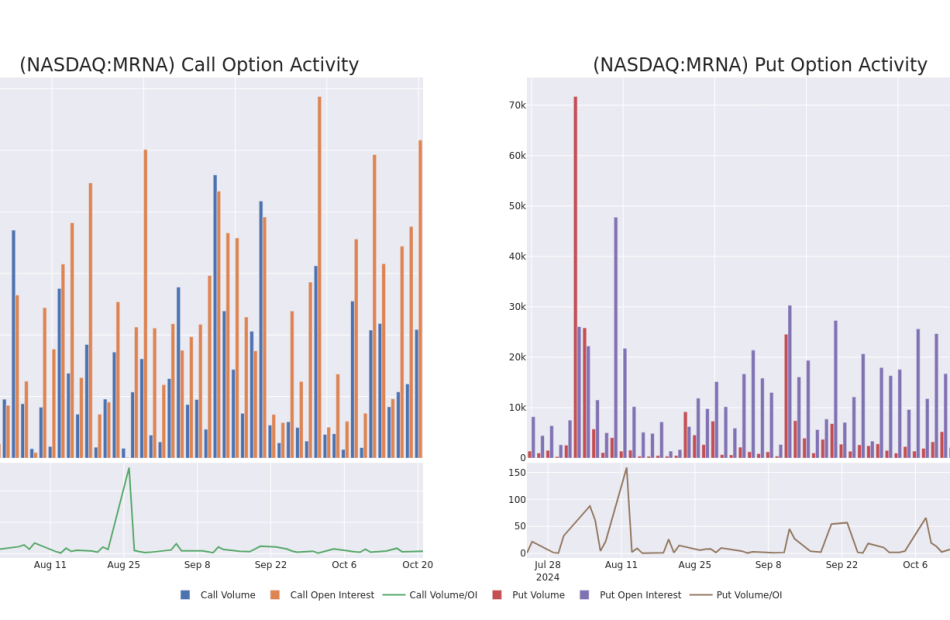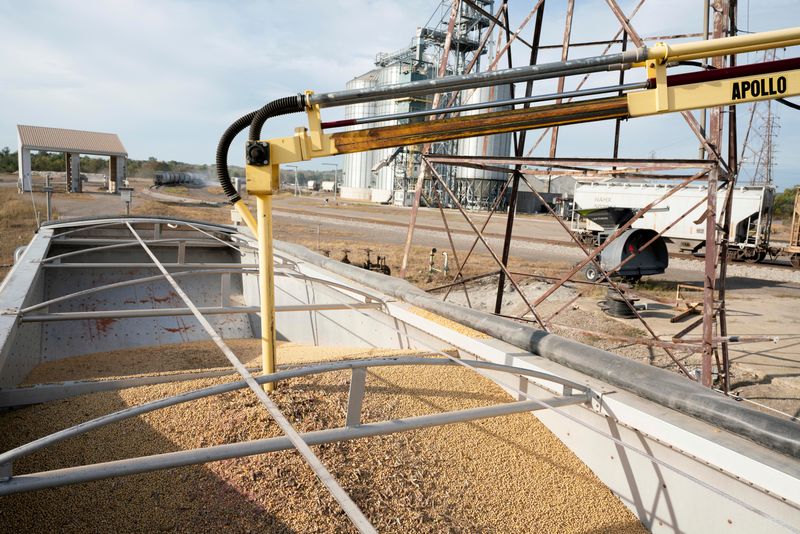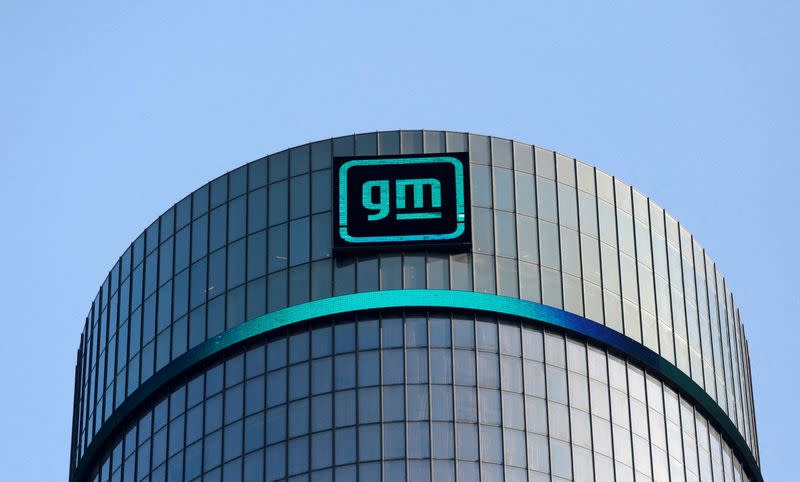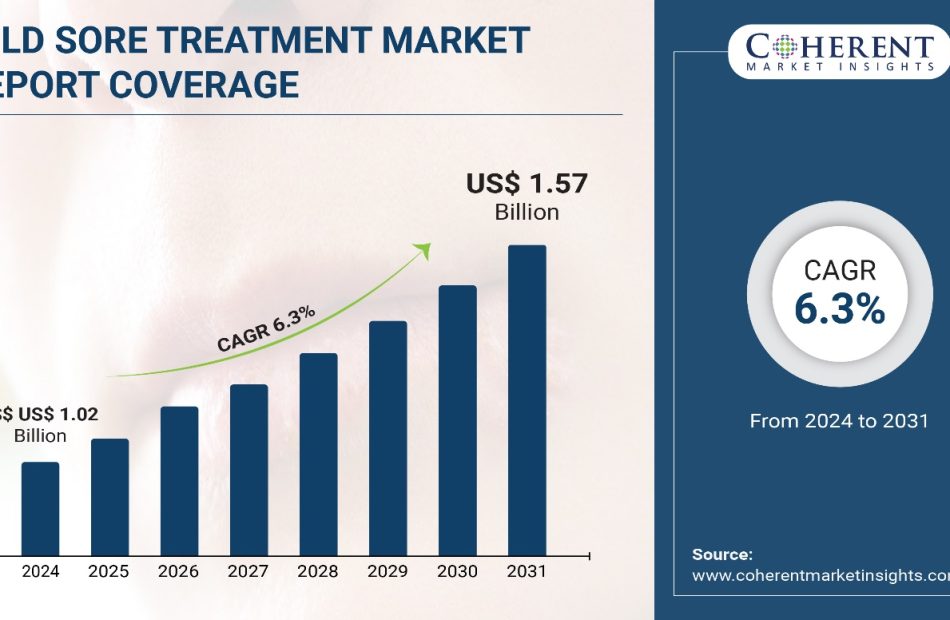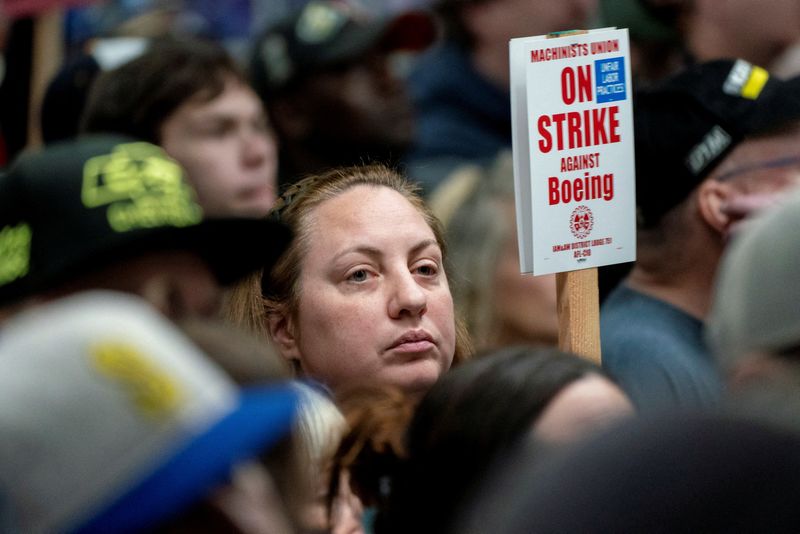A Closer Look at Moderna's Options Market Dynamics
Investors with a lot of money to spend have taken a bullish stance on Moderna MRNA.
And retail traders should know.
We noticed this today when the trades showed up on publicly available options history that we track here at Benzinga.
Whether these are institutions or just wealthy individuals, we don’t know. But when something this big happens with MRNA, it often means somebody knows something is about to happen.
So how do we know what these investors just did?
Today, Benzinga‘s options scanner spotted 19 uncommon options trades for Moderna.
This isn’t normal.
The overall sentiment of these big-money traders is split between 68% bullish and 31%, bearish.
Out of all of the special options we uncovered, 4 are puts, for a total amount of $150,092, and 15 are calls, for a total amount of $756,558.
Predicted Price Range
Analyzing the Volume and Open Interest in these contracts, it seems that the big players have been eyeing a price window from $40.0 to $120.0 for Moderna during the past quarter.
Analyzing Volume & Open Interest
Examining the volume and open interest provides crucial insights into stock research. This information is key in gauging liquidity and interest levels for Moderna’s options at certain strike prices. Below, we present a snapshot of the trends in volume and open interest for calls and puts across Moderna’s significant trades, within a strike price range of $40.0 to $120.0, over the past month.
Moderna Option Volume And Open Interest Over Last 30 Days
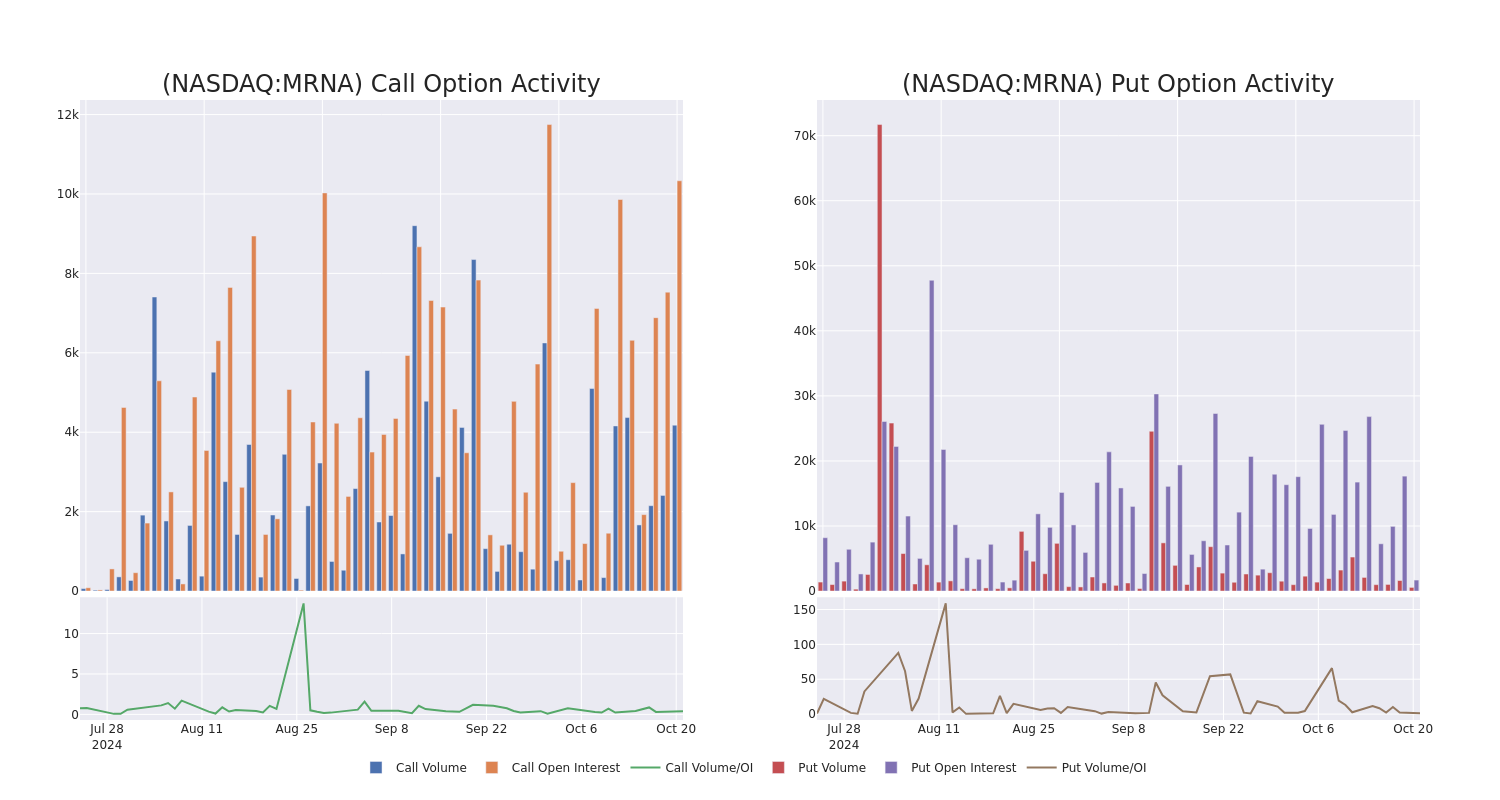
Largest Options Trades Observed:
| Symbol | PUT/CALL | Trade Type | Sentiment | Exp. Date | Ask | Bid | Price | Strike Price | Total Trade Price | Open Interest | Volume |
|---|---|---|---|---|---|---|---|---|---|---|---|
| MRNA | CALL | SWEEP | BULLISH | 09/19/25 | $4.25 | $4.1 | $4.25 | $95.00 | $135.0K | 548 | 319 |
| MRNA | CALL | SWEEP | BEARISH | 12/20/24 | $4.1 | $4.0 | $4.05 | $60.00 | $101.2K | 1.4K | 291 |
| MRNA | CALL | SWEEP | BULLISH | 11/15/24 | $4.05 | $4.0 | $4.0 | $55.00 | $83.6K | 856 | 351 |
| MRNA | PUT | SWEEP | BEARISH | 12/20/24 | $1.22 | $1.17 | $1.21 | $40.00 | $60.2K | 774 | 503 |
| MRNA | CALL | SWEEP | BULLISH | 09/19/25 | $4.2 | $4.05 | $4.2 | $95.00 | $60.0K | 548 | 463 |
About Moderna
Moderna is a commercial-stage biotech that was founded in 2010 and had its initial public offering in December 2018. The firm’s mRNA technology was rapidly validated with its covid vaccine, which was authorized in the United States in December 2020. Moderna had 40 mRNA development candidates in clinical development as of September 2024. Programs span a wide range of therapeutic areas, including infectious disease, oncology, cardiovascular disease, and rare genetic diseases.
In light of the recent options history for Moderna, it’s now appropriate to focus on the company itself. We aim to explore its current performance.
Where Is Moderna Standing Right Now?
- With a trading volume of 1,969,412, the price of MRNA is down by -1.22%, reaching $53.44.
- Current RSI values indicate that the stock is may be oversold.
- Next earnings report is scheduled for 17 days from now.
What The Experts Say On Moderna
In the last month, 2 experts released ratings on this stock with an average target price of $55.0.
Turn $1000 into $1270 in just 20 days?
20-year pro options trader reveals his one-line chart technique that shows when to buy and sell. Copy his trades, which have had averaged a 27% profit every 20 days. Click here for access.
* An analyst from Bernstein downgraded its action to Market Perform with a price target of $55.
* Maintaining their stance, an analyst from Jefferies continues to hold a Hold rating for Moderna, targeting a price of $55.
Trading options involves greater risks but also offers the potential for higher profits. Savvy traders mitigate these risks through ongoing education, strategic trade adjustments, utilizing various indicators, and staying attuned to market dynamics. Keep up with the latest options trades for Moderna with Benzinga Pro for real-time alerts.
Market News and Data brought to you by Benzinga APIs
© 2024 Benzinga.com. Benzinga does not provide investment advice. All rights reserved.
Lumen stock jumps on Meta AI partnership
Investing.com — Lumen Technologies shares surged 17.8% in premarket trading on Monday following the announcement of a strategic partnership with Meta Platforms (NASDAQ:META) aimed at significantly increasing network capacity to support Meta’s growing artificial intelligence (AI) infrastructure.
The new collaboration will leverage Lumen’s Private Connectivity Fabric to provide Meta with enhanced interconnection and bandwidth flexibility, enabling the tech giant to meet the increasing demand for AI-driven services.
The partnership aligns with Meta’s vision to advance AI capabilities for a more connected world. Meta’s director of Network Investments, Alex-Handrah Aimé, said: “We are excited to work with Lumen to use this advanced network to provide scale and reliability for seamless experiences.”
Ashley Haynes-Gaspar, Lumen’s executive vice president and chief revenue officer, said the company is “enabling one of the biggest expansions of network capacity in our lifetime.”
“We’ve transformed our company to meet this demand.” She added that the expanded network will provide seamless and flexible connectivity as Meta’s platforms integrate more AI tools and services.
The partnership highlights the growing need for infrastructure as AI technology evolves to handle complex tasks like real-time language translation and image generation.
The initiative will offer access to both existing and new fiber routes between data centers, allowing Meta to continue to meet the needs of billions of users globally.
Lumen’s network solutions aim to prepare both companies for future developments in AI by supporting increasingly complex computing tasks.
The partnership comes as AI technologies take center stage across industries, underscoring the need for scalable and reliable networks.
Investors have responded positively, driving Lumen’s stock higher to levels last seen in October 2022.
Related Articles
Lumen stock jumps on Meta AI partnership
Disney names Morgan Stanley’s James Gorman as chair, plans to announce new CEO in 2026
Italian tech company Bending Spoons has eye on US for potential IPO
Stilwell Will Vote in Favor of Proposal to Sell IF Bancorp – UPDATE
NEW YORK, Oct. 21, 2024 (GLOBE NEWSWIRE) — Stilwell Activist Investments, L.P. (together with its affiliates, “Stilwell”), one of the largest stockholders of IF Bancorp, Inc. (“IROQ” or the “Company”) IROQ, today issued the following statement in connection with the Company’s upcoming annual meeting of stockholders scheduled to be held on November 25, 2024 (the “Annual Meeting”), at which stockholders will vote on a number of matters, including Stilwell’s non-binding proposal requesting a sale of the Company (the “Proposal”), submitted pursuant to Rule 14a-8 of the Securities Exchange Act of 1934, as amended:
IF Bancorp – Chronically Disappointing.
Based on chronic underperformance and the likelihood of continued underperformance, we intend to vote FOR the Proposal, copied directly below, at the upcoming Annual Meeting.
Proposal: RESOLVED, that the stockholders of IF Bancorp, Inc. (the “Company” or “IROQ“) hereby recommend that the Board of Directors take all necessary steps to promptly effectuate a sale of the Company.
As set forth in our Supporting Statement included in IROQ’s proxy statement filed with the Securities and Exchange Commission on October 16, 2024, we believe that the returns on the Company’s assets have been subpar for many years and that IROQ stockholders would be best served if the Company and its assets were sold at the earliest opportunity for the highest price available.
Although our proposal is non-binding, we believe it provides a referendum for IROQ stockholders to express their views on the status quo and that it would be incumbent upon the Board of Directors to seriously consider such views if a majority of stockholders support this Proposal at the Annual Meeting.
Investor Contact:
Megan Parisi
(787) 985-2194
mparisi@stilwellgroup.com
PLEASE NOTE: THIS IS NOT A SOLICITATION OF AUTHORITY TO VOTE YOUR PROXY. DO NOT SEND US YOUR PROXY CARD. STILWELL IS NOT ASKING FOR YOUR PROXY CARD AND CANNOT AND WILL NOT ACCEPT PROXY CARDS IF SENT. STILWELL IS NOT ABLE TO VOTE YOUR PROXY, NOR DOES THIS COMMUNICATION CONTEMPLATE SUCH AN EVENT.

Market News and Data brought to you by Benzinga APIs
© 2024 Benzinga.com. Benzinga does not provide investment advice. All rights reserved.
Speedy US corn and soy harvests strain farmers, storage capacity
By Julie Ingwersen and Heather Schlitz
CHICAGO (Reuters) – U.S. farmers are harvesting two of the largest corn and soybean crops in history at the fastest pace in years, straining their physical capabilities and their grain storage capacity.
The massive influx of crops is testing growers who are already grappling with grain prices near four-year lows, stiff competition for global export sales and farm incomes that are down 23% from a record high just two years ago.
Many Midwestern farmers still have grain left in storage from 2023, after they refused to sell a record corn crop due to low prices. Now, dry weather is accelerating this year’s harvests and forcing grain handlers in some areas to store corn outside, rather than in storage bins.
“It has been fast and furious,” Brent Johnson, a corn and soybean farmer in Ashland, Illinois, said of harvesting.
Weeks of warm and dry weather across the Corn Belt this autumn sped up crop maturity and enabled combines to keep rolling. As a result, farmers harvested 47% of the country’s second biggest corn crop in history by Oct. 13, topping the five-year average of 39%, according to U.S. data.
The harvest of the record-large soybean crop was 67% complete by Oct. 13, the fastest pace since 2012, when a major drought limited production.
Jeff O’Connor, who grows corn and soybeans near Kankakee, Illinois, said his employees only had a couple of half-days off to rest in the past month due to rapid harvesting.
“My people and equipment would like a break,” he said.
As soy harvesting winds down, farmers are moving on to corn, which typically yields more than three times as much grain per acre than soybeans. At some Midwest elevators, the flow of corn from the fields has been filling up storage, causing long lines of trucks waiting to dump their loads.
In Shell Rock, Iowa, ethanol producer POET is storing corn on the ground, local farmer Caleb Hamer said, adding that he dumped some of his harvest on a pile that looked like it held 1.5 million bushels.
“We are harvesting a crop too fast for our storage infrastructure. That’s the biggest thing,” said Chad Henderson, founder of Wisconsin-based Prime Agricultural Consultants.
Quick harvesting and localized storage squeezes are forcing farmers to consider selling some crops for less than it cost to produce them. Yet corn futures prices are signaling they should hold the grain for a few months, if possible.
On the Chicago Board of Trade, benchmark December corn futures were trading at a roughly 22-cent discount to the May 2025 contract. That means farmers could earn 22 cents a bushel by selling their corn for deferred delivery in May.
Still, growers should not store their harvest without booking any sales and risk a deeper market downturn, CoBank economist Tanner Ehmke said.
Chris Gibbs, who grows corn and soybeans in Ohio, said he has not made any advance deals to sell his autumn harvests for the first time in 48 years of farming.
“My marketing plan is to keep my head down and wait for an opportunity to come along, which is a very poor plan,” Gibbs said.
(Reporting by Julie Ingwersen and Heather Schlitz in Chicago. Editing by Tom Polansek and Marguerita Choy)
GM, Ford brace for investor scrutiny over pricing power, EV losses
By Nathan Gomes and Nora Eckert
(Reuters) – General Motors (GM) and Ford Motor (F) will likely have a tough time convincing investors when they report results that Detroit’s pricing power for gasoline cars is still strong and losses from their EV ventures are dwindling.
GM is set to release its results for the July to September period on Oct. 22, while crosstown rival Ford will report on Oct. 28.
GM CEO Mary Barra said earlier this month that profit margins had not peaked on traditional gas-powered vehicles and EV sales were ramping up.
The automaker’s shares have risen by over a third this year as GM raised its annual profit forecast twice, bolstered by strong sales of gas-powered models.
In contrast, Ford has struggled with quality woes and billion-dollar EV losses that have sent its shares down 8% this year.
Analysts from Deutsche Bank have said the automaker could fall short of expectations for the quarter, hampered in particular during the period by bloated inventories.
Wall Street has for months questioned whether consumers will pay for trucks and SUVs at historically high prices as steep interest rates and broader economic concerns loom.
Data is mixed. The average listing price for a new vehicle rose 2% month-on-month in October to $47,823, according to Cox Automotive’s latest report. That price is up only about 1% from a year ago, indicating that prices have touched a ceiling.
Automakers have had to lower prices of vehicles as cautious consumers shy away from heavier purchases – a stark contrast from the pricing power companies commanded a few years back when the production of newer models was constrained by supply chain issues.
“Concerns over peak pricing … as well as uncertainties around EV strategies and penetration, serve as mid- to longer-term overhangs,” Deutsche Bank Research said in a note.
“Moreover, we also have the November election next month that could influence EV policies one way or another.”
Both Ford and GM have focused on producing more higher margin gasoline-powered models such as Ford’s Maverick pickup and GM’s Chevrolet Trax compact SUV as EV sales growth has slowed.
Ford in August canceled its much-anticipated electric three-row SUV, saying it could not profitably launch the vehicle. GM has gone slow on its EV production goals.
The Detroit automakers have also grabbed significant market share from struggling rival Stellantis, whose sales in North America have been lagging.
Investors and analysts will also be looking for comments on how the economy is affecting consumers.
“Even with a larger-than-expected rate cut by the Fed in September, there hasn’t been a material improvement in auto loan rates or the overall affordability of new vehicles,” said Cox Automotive Chief Economist Jonathan Smoke.
Consumers’ preferences have shifted towards economical compact crossovers over traditionally preferred larger vehicles due to their lower upkeep costs and better gas mileage, U.S. automakers’ third-quarter sales data showed.
THE NUMBERS
GM:
** Analysts estimate Q3 revenue to grow about 1% to $44.5 billion when it reports results on Oct. 22
** Earnings per share (EPS) in the quarter estimated at $2.46
FORD:
** Analysts estimate Q3 revenue to grow about 2% to $42 billion when it reports results on Oct. 28
** Earnings per share (EPS) in the quarter estimated at $0.48
(Reporting by Nathan Gomes in Bengaluru, Nora Eckert in Detroit; Editing by Saumyadeb Chakrabarty)
Billionaire Philippe Laffont Just Increased His Position by 139% in This Data Center Opportunity (Hint: It's Not Nvidia)
Philippe Laffont is a billionaire investor best known for founding the hedge fund Coatue Management. While hedge funds are widely known for their sophisticated trading prowess and secretive natures, retail investors can get a glimpse into the stocks that financial institutions are buying and selling once per quarter by looking at a form 13F.
Coatue’s latest 13F contained a number of trades across major technology stocks, particularly those looking to disrupt artificial intelligence (AI). However, the fund also made a massive purchase in a data center opportunity that has largely been flying under the radar. That’s right! There are other opportunities in data centers besides Nvidia.
Below, I’m going to analyze the data center opportunity on Coatue’s radar and assess if now is a good opportunity to buy the stock.
What data center stock did Coatue Management just buy?
According to its most recent 13F, Coatue purchased 2.9 million shares of Constellation Energy (NASDAQ: CEG) during the second quarter — increasing its position by 139%.
I don’t blame you if you’re confused as to how a power utility could be seen as a data center opportunity. Here’s the thing: Data centers consume a ton of power. With AI becoming more of a tailwind for businesses across all industry sectors, companies are going to need to invest in more energy-efficient infrastructure.
This is where Constellation Energy comes into focus. The company specializes in nuclear power, which is widely seen as a superior alternative to traditional sources of powering data centers.
Some recent big-ticket moves in nuclear power
Several names in big tech have been quietly making moves at the intersection of nuclear power and data centers this year. In March, Amazon‘s cloud unit, Amazon Web Services (AWS), acquired a nuclear-powered data center from Talen Energy. And just this week, the company signed agreements with a state utility called Energy Northwest and Dominion Energy, both of which will be helping Amazon develop and explore how small modular reactors (SMR) can facilitate its nuclear power projects.
These deals by Amazon follow a similar one by Alphabet, which will be relying on Kairos Power to develop SMRs.
While the subject matter of Amazon’s and Alphabet’s recent moves have dominated headlines lately, Constellation Energy is by no means late to the party. The company has been working closely with Microsoft for quite some time, and several weeks ago, the two industry leaders announced plans to reopen a nuclear power facility on Three Mile Island in Pennsylvania.
Is Constellation Energy stock a buy right now?
The obvious takeaway here is that Constellation has experienced outsized valuation expansion recently. Following the announcement of the Three Mile Island deal on Sept. 20, shares of Constellation have risen as much as 12% — a pretty sharp move based on one press release.
While I don’t encourage trying to time your buying activity, I think investors need to approach Constellation with some caution right now. It’s no coincidence that Amazon and Alphabet have made some moves with nuclear power companies on the heels of Microsoft’s deal with Constellation.
I suspect more companies will be exploring nuclear power solutions for their data center needs. As such, shares of Constellation could experience some momentum based on any future news — whether the company is directly involved or not.
The positive thing here is that the AI story is in its early chapters. For this reason, demand for data center services and adjacent opportunities, such as nuclear power, should continue to materialize in the long run.
While Constellation Energy stock may appear a little pricey right now, Coatue’s investment is a savvy move. Investors with long-term horizons may want to keep this name on their radars.
Don’t miss this second chance at a potentially lucrative opportunity
Ever feel like you missed the boat in buying the most successful stocks? Then you’ll want to hear this.
On rare occasions, our expert team of analysts issues a “Double Down” stock recommendation for companies that they think are about to pop. If you’re worried you’ve already missed your chance to invest, now is the best time to buy before it’s too late. And the numbers speak for themselves:
-
Amazon: if you invested $1,000 when we doubled down in 2010, you’d have $21,285!*
-
Apple: if you invested $1,000 when we doubled down in 2008, you’d have $44,456!*
-
Netflix: if you invested $1,000 when we doubled down in 2004, you’d have $411,959!*
Right now, we’re issuing “Double Down” alerts for three incredible companies, and there may not be another chance like this anytime soon.
*Stock Advisor returns as of October 14, 2024
John Mackey, former CEO of Whole Foods Market, an Amazon subsidiary, is a member of The Motley Fool’s board of directors. Suzanne Frey, an executive at Alphabet, is a member of The Motley Fool’s board of directors. Adam Spatacco has positions in Alphabet, Amazon, Microsoft, and Nvidia. The Motley Fool has positions in and recommends Alphabet, Amazon, Constellation Energy, Microsoft, and Nvidia. The Motley Fool recommends Dominion Energy and recommends the following options: long January 2026 $395 calls on Microsoft and short January 2026 $405 calls on Microsoft. The Motley Fool has a disclosure policy.
Billionaire Philippe Laffont Just Increased His Position by 139% in This Data Center Opportunity (Hint: It’s Not Nvidia) was originally published by The Motley Fool
Cold Sore Treatment Market Size to Reach $1.57 Billion by 2031, Globally, at a 6.3% CAGR: Report by Coherent Market Insights
Burlingame, Oct. 21, 2024 (GLOBE NEWSWIRE) — The global Cold Sore Treatment Market Size to Grow from US$ 1.02 Billion in 2024 to US$ 1.57 Billion by 2031, at a Compound Annual Growth Rate (CAGR) of 6.3% during the forecast period, as highlighted in a new report published by Coherent Market Insights. Rising awareness regarding available treatment options is also fueling the demand for cold sore treatments. The market is witnessing numerous product launches catering to wide-ranging consumer requirements in terms of formulation, dosage, and application methods, which is further supporting market growth over the forecast period.
Request Sample Copy of this Report: https://www.coherentmarketinsights.com/insight/request-sample/7257
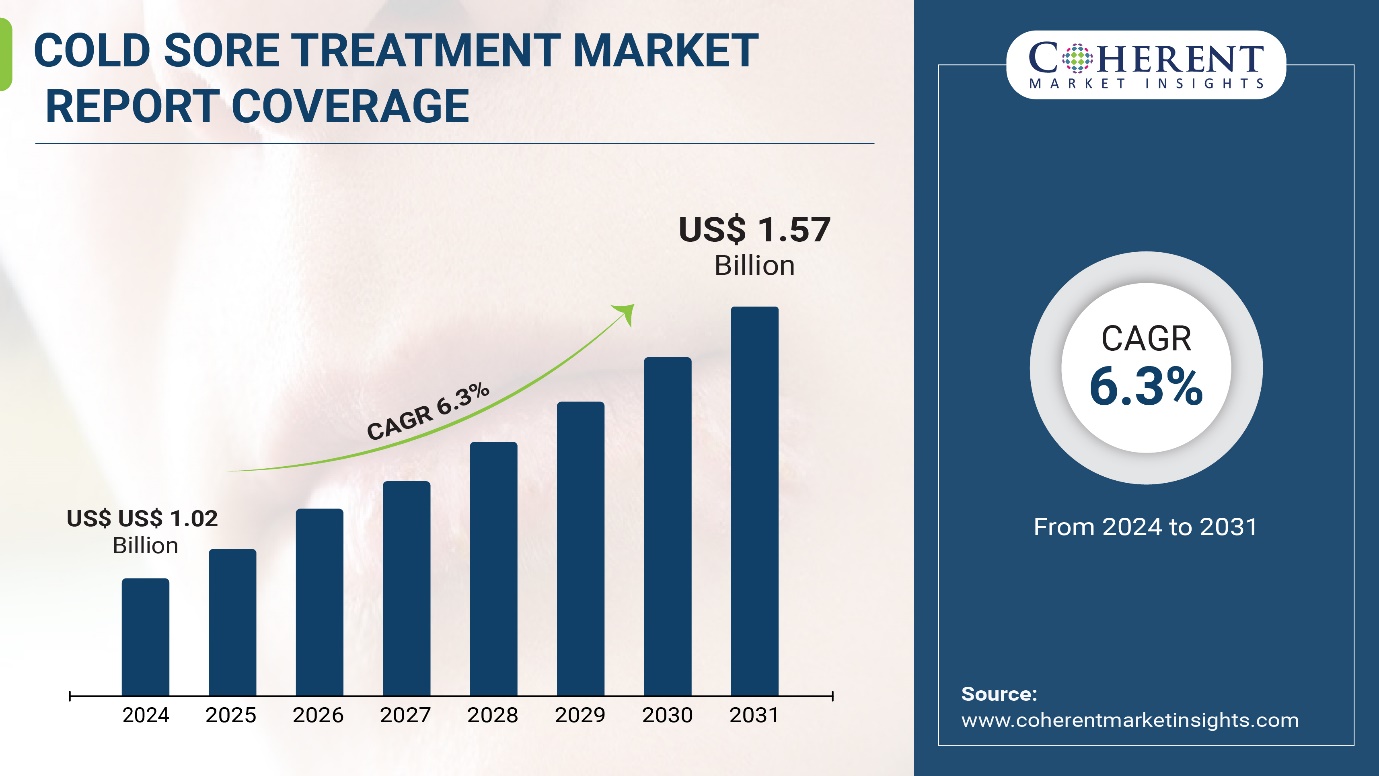
Market Dynamics
The cold sore treatment market growth is majorly driven by the rising incidences of herpes labialis infections globally. According to the World Health Organization (WHO), around 3.7 billion people under the age of 50 years or 67% of the population have HSV-1 infection globally. Moreover, increasing adoption of over-the-counter medication for cold sores is also contributing to the market growth. However, lack of awareness about treatment and symptoms of cold sores in low and middle-income countries is expected to hinder the market growth.
Market Trends
The cold sore treatment market is witnessing a growing demand for topical antiviral drugs for preventing and treating cold sores. Topical antiviral drugs like penciclovir and acyclovir are widely used as they have fewer side effects as compared to oral antiviral drugs. Furthermore, the market is also expected to gain traction from increasing research and development activities for developing novel drug formulations such as combination therapies and long-acting formulations to effectively treat cold sores. For instance, in June 2022, Chugai Pharmaceutical announced results from a Phase III study evaluating the efficacy and safety of long-acting formulation of penciclovir cream for the treatment of herpes labialis.
Cold Sore Treatment Market Report Coverage
| Report Coverage | Details |
| Market Revenue in 2024 | $1.02 billion |
| Estimated Value by 2031 | $1.57 billion |
| Growth Rate | Poised to grow at a CAGR of 6.3% |
| Historical Data | 2019–2023 |
| Forecast Period | 2024–2031 |
| Forecast Units | Value (USD Million/Billion) |
| Report Coverage | Revenue Forecast, Competitive Landscape, Growth Factors, and Trends |
| Segments Covered | By Product Type, By Cold Sore Type, By Age Group, By Distribution Channel: |
| Geographies Covered | North America, Europe, Asia Pacific, and Rest of World |
| Growth Drivers | • Increasing incidence of cold sores • Growing demand for over-the-counter drugs |
| Restraints & Challenges | • Social stigma associated with cold sores • Self-limiting nature of outbreaks |
Topical treatments segment accounted for the largest market share of 35% in 2024 owing to the rising adoption of creams and ointments for quick relief from symptoms. Creams containing acyclovir are widely used as they are effective in reducing healing time when applied at the first signs of a cold sore outbreak. Oral antiviral medications help shorten outbreak duration and reduce symptoms severity by defending cells from virus replication if taken at the initial signs of a cold sore. However, their market share is lower at 25% due to fewer patients opting for pills over creams.
Immediate Delivery Available | Buy This Premium Research Report: https://www.coherentmarketinsights.com/insight/buy-now/7257
The primary outbreaks segment held the dominant position in 2024 with a share of 60% due to most adults experiencing their first cold sore by age 20. Children and adolescents are highly susceptible to primary herpes simplex virus type 1 infections through oral contact.
Children formed the largest age group in 2024 with a 35% share as their immune system is not equipped to deal with the virus initially. Safety profiles of treatments targeting children are continuously improving to prevent serious complications.
Key Market Takeaways
The cold sore treatment market is anticipated to witness a CAGR of 6.3% during the forecast period 2024-2031, owing to increasing awareness initiatives by key players.
On the basis of product type, topical treatment segment is expected to hold a dominant position, owing to advantages like immediate relief and localized action. On the basis of cold sore type, primary outbreaks segment is expected to hold a dominant position over the forecast period, due to large patient population affected during initial exposures.
On the basis of age group, children segment is expected to hold a dominant position, due to underdeveloped immune defenses in pediatric patients. On the basis of distribution channel, hospital pharmacy segment is expected to hold a dominant position, owing to availability of prescription-only medications and regular check-ups.
By region, North America is expected to hold a dominant position over the forecast period, due to developed healthcare infrastructure and growing disease prevalence in the US and Canada.
Key players operating in the cold sore treatment market include GSK Plc, Novartis AG, Teva Pharmaceutical US, Inc., AbbVie Inc, Merck & Co., Inc., Pfizer Inc., Sanofi, Mylan N.V., Aurobindo Pharma, Dr. Reddy’s Pharmaceuticals, HRA Pharma, Quantum Health, Church & Dwight Co., Inc., Perrigo Company plc, Biofrontera AG, Bausch Health Companies Inc., Meda Pharmaceuticals among others.
Recent Developments
In February 2024, Abreva promoted confidence among cold store suffers by introducing a distinctive, diamond-studded lip design.
In December 2022, BioNTech initiated a Phase 1 clinical trial for BNT163, an Mrna vaccine aimed at preventing genital lesions caused by HSV-2 and potentially HSV-1.
Request For Customization: https://www.coherentmarketinsights.com/insight/request-customization/7257
Detailed Segmentation
By Product Type Insights (Revenue, USD Bn, 2019 – 2031)
- Topical Treatments
- Creams and Ointments
- Acyclovir
- Penciclovir
- Docosanol
- Other Topical Treatments
- Medicated Lip Balms and Patches
- Oral Treatments
- Antiviral Medications
- Valacyclovir
- Famciclovir
- Acyclovir
- Over-the-Counter Medications
- Light-Based Treatments
- Laser Therapy
- Photodynamic Therapy
By Cold Sore Type Insights (Revenue, USD Bn, 2019 – 2031)
- Primary Outbreaks
- Recurrent Outbreaks
By Age Group Insights (Revenue, USD Bn, 2019 – 2031)
- Children and Adolescents
- Adults
By Distribution Channel Insights (Revenue, USD Bn, 2019 – 2031)
- Hospital Pharmacy
- Retail Pharmacy
- Online Pharmacy
Regional Insights (Revenue, USD Bn, 2019 – 2031)
- North America
- Latin America
- Brazil
- Argentina
- Mexico
- Rest of Latin America
- Europe
- Germany
- K.
- Spain
- France
- Italy
- Russia
- Rest of Europe
- Asia Pacific
- China
- India
- Japan
- Australia
- South Korea
- ASEAN
- Rest of Asia Pacific
- Middle East
- GCC Countries
- Israel
- Rest of Middle East
- Africa
- South Africa
- North Africa
- Central Africa
Have a Look at Trending Research Reports on Pharmaceutical Domain:
The Global Camylofin Market is estimated to be valued at USD 185.1 Mn in 2024 and is expected to reach USD 261.2 Mn by 2031, growing at a compound annual growth rate (CAGR) of 5% from 2024 to 2031.
Global chronic disease management market is estimated to be valued at USD 5.71 Bn in 2024 and is expected to reach USD 13.80 Bn by 2031, exhibiting a compound annual growth rate (CAGR) of 13.4% from 2024 to 2031.
Global donor egg IVF (in-vitro fertilization) market is estimated to be valued at USD 2.85 Bn in 2024 and is expected to reach USD 5.30 Bn by 2031, exhibiting a compound annual growth rate (CAGR) of 9.3% from 2024 to 2031.
Cold, Cough, and Sore Throat Remedies Market, Size, Share, Outlook, and Opportunity Analysis, 2024 – 2031
About Us:
Coherent Market Insights is a global market intelligence and consulting organization that provides syndicated research reports, customized research reports, and consulting services. We are known for our actionable insights and authentic reports in various domains including aerospace and defense, agriculture, food and beverages, automotive, chemicals and materials, and virtually all domains and an exhaustive list of sub-domains under the sun. We create value for clients through our highly reliable and accurate reports. We are also committed in playing a leading role in offering insights in various sectors post-COVID-19 and continue to deliver measurable, sustainable results for our clients.

Mr. Shah Senior Client Partner – Business Development Coherent Market Insights Phone: US: +1-650-918-5898 UK: +44-020-8133-4027 AUS: +61-2-4786-0457 India: +91-848-285-0837 Email: sales@coherentmarketinsights.com Website: https://www.coherentmarketinsights.com
© 2024 Benzinga.com. Benzinga does not provide investment advice. All rights reserved.
Boeing's new proposal may lead to $1 billion in wage-related costs over four years
By Abhijith Ganapavaram and Allison Lampert
(Reuters) -Boeing’s shares rose 4% on Monday on hopes of an end to a crippling strike, although analysts expressed doubts that the proposed labor contract unveiled over the weekend would muster enough support from workers.
About 33,000 workers will vote on the contract proposal on Wednesday after a more than month-long work stoppage, which has halted production of models including its best-selling 737 MAX narrowbody jets.
The vote also coincides with Boeing’s third-quarter results, in which it is expected to report a hefty loss.
“We view the proposal as a positive step,” Ben Tsocanos, aerospace director at ratings agency S&P Global, told Reuters. “Resolving the strike quickly is key to improving the company’s financial position and supporting the rating.”
Moody’s declined to comment on the new proposal. Ratings agencies have warned of a downgrade if the strike drags on.
The new contract proposal announced on Saturday includes a 35% pay hike over four years, a $7,000 ratification bonus, a reinstated incentive plan and enhanced contributions to workers’ 401(k) retirement plans, including a one-time $5,000 contribution plus up to 12% in employer contributions.
The new wage increase and the ratification bonus are an improvement over the previous offer, which was rebuffed by the striking workers, but the salary hikes still fall short of a 40% pay rise over four years demanded by the Machinists’ union.
Wells Fargo’s Matthew Akers, who has a bearish view on Boeing stock, said the offer may not be ratified.
“Our analysis of over 1,000 online comments implies a more constructive view but still not enough to pass,” Akers said in a note.
He estimated 20% were constructive on the latest offer vs 3% on the prior offer after reviewing comments on IAM 751 Reddit forum, though he cautioned the forum maybe negatively biased.
J.P.Morgan’s Seth Seifman estimated the wage hikes might increase Boeing’s costs by more than $1 billion, while Jefferies analyst Sheila Kahyaoglu expects wage-related expenses at about $1.3 billion.
The latest proposal follows weeks of sometimes acrimonious discussions between Boeing and the International Association of Machinists and Aerospace Workers (IAM) union, whose leadership faced fury from some members after endorsing the first offer from Boeing that most workers opposed.
The IAM did not explicitly endorse the latest offer but told workers on Saturday “it is worthy of your consideration”.
However, even if the new contract is accepted by members, the planemaker still faces the challenge of quickly restoring production to pre-strike levels once workers return.
“Based on our analysis of prior Boeing strikes, it has taken an average of 6-12 months after the conclusion of the strike for production rates to return to pre-strike levels. Moreover, the impact the strike has had on the already fragile supply chain is uncertain,” RBC Capital Markets analysts said.
The work stoppage has halted production of Boeing’s cash-cow 737 MAX, and 767 and 777 widebodies.
Boeing shares were trading at $161.
In a separate labor action, about 5,000 workers were set to return to work at business jet maker Textron’s facilities in Wichita, Kansas, after voting to accept a five-year contract providing wage increases of 31%.
“Boeing’s latest offer more likely to win approval, particularly following Textron’s IAM contract approval; but negative Reddit posts suggest it may not be a shoo-in,” TD Cowen analyst Cai von Rumohr said.
In a boost to Boeing, Dubai’s Emirates Airlines ordered five Boeing 777F freighters on Monday and will make a decision this year on a purchase of further Boeing or Airbus models.
(Reporting By Allison Lampert in Montreal and Abhijith Ganapavaram in Bengaluru; Editing by Anil D’Silva and Shounak Dasgupta)
Coinbase CEO Brian Armstrong Supports Republican Dave Mccormick For Pennsylvania Senate Seat: 'He Is The Better Candidate On Crypto'
Brian Armstrong, CEO of cryptocurrency exchange Coinbase, has publicly endorsed GOP nominee David McCormick for the Pennsylvania senate seat, citing his friendlier stance on cryptocurrency.
What Happened: Armstrong took to X Sunday to back the Senate hopeful. “If you live in Pennsylvania, you should vote for Dave McCormick. He is the better candidate on crypto (among many other credentials),” Armstrong wrote.
See Also: Riding Dogecoin’s Wave: Indicators Point To What Could Happen Next
The former CEO of Bridgewater Associates announced his candidacy last year, aiming to unseat three-time incumbent Democratic Sen. Bob Casey Jr.
A U.S. Army veteran and former Treasury Department official, McCormick has publicly expressed his pro-cryptocurrency stance. He stated that American leadership in blockchain and cryptocurrency is important to the country’s economic and national security.
Interestingly, in May earlier this year, his rival Casey crossed the party line to support a resolution against the SEC’s anti-cryptocurrency SAB121. On the other hand, he cosponsored the Digital Asset Anti-Money Laundering Act of 2023, brought forward by anti-cryptocurrency crusader Sen. Elizabeth Warren (D-Mass.)
According to the cryptocurrency-based prediction market Polymarket, Donald Trump had a 57% chance, against Kamala Harris’ 43%, of winning the popular vote in the key swing state.
Why It Matters: Armstrong’s endorsement of McCormick was significant, given his position as the head of one of the world’s largest digital asset trading platforms.
The cryptocurrency mogul had previously said that cryptocurrency is a non-partisan issue, with advocates from both sides of the political spectrum championing its cause.
The company revealed earlier this year it was engaging with both the Trump campaign and the Harris campaign to push for regulatory clarity for the industry.
Did You Know?
Market News and Data brought to you by Benzinga APIs
© 2024 Benzinga.com. Benzinga does not provide investment advice. All rights reserved.

